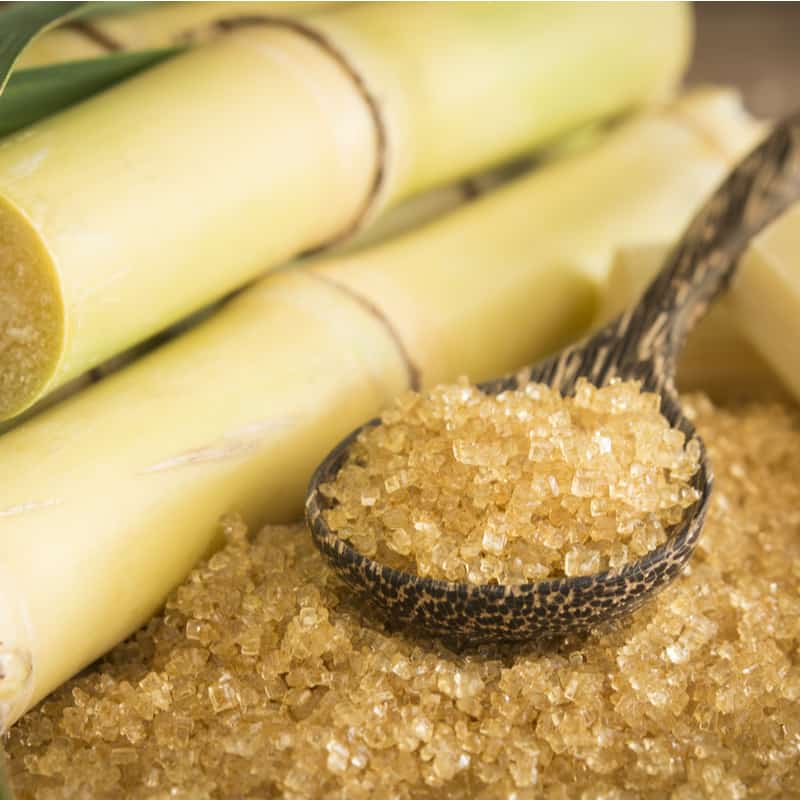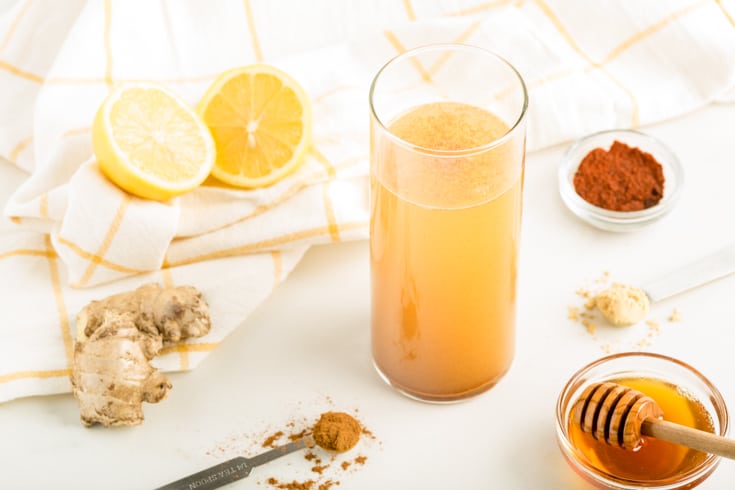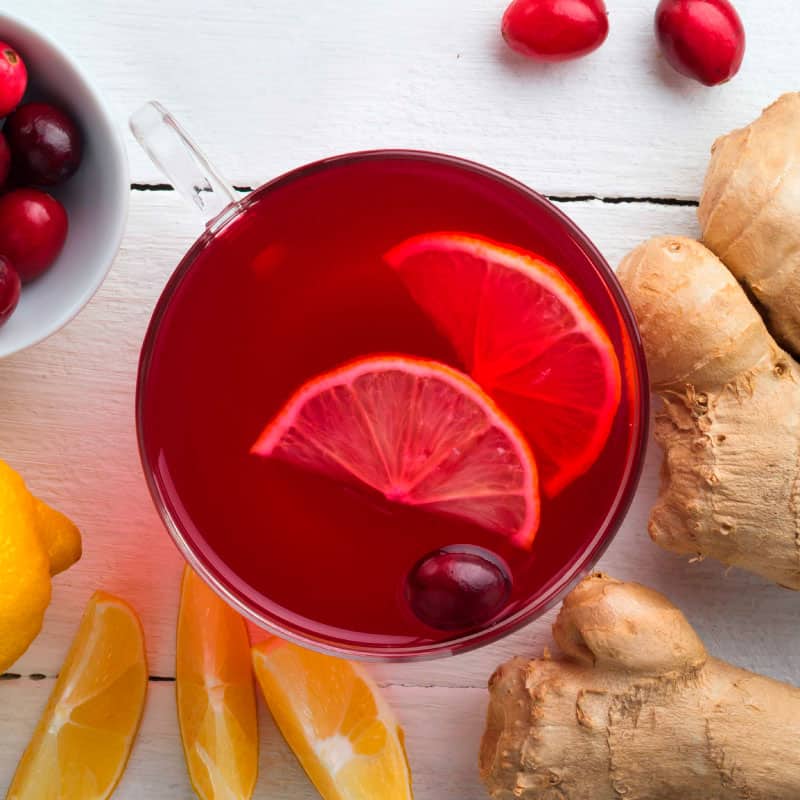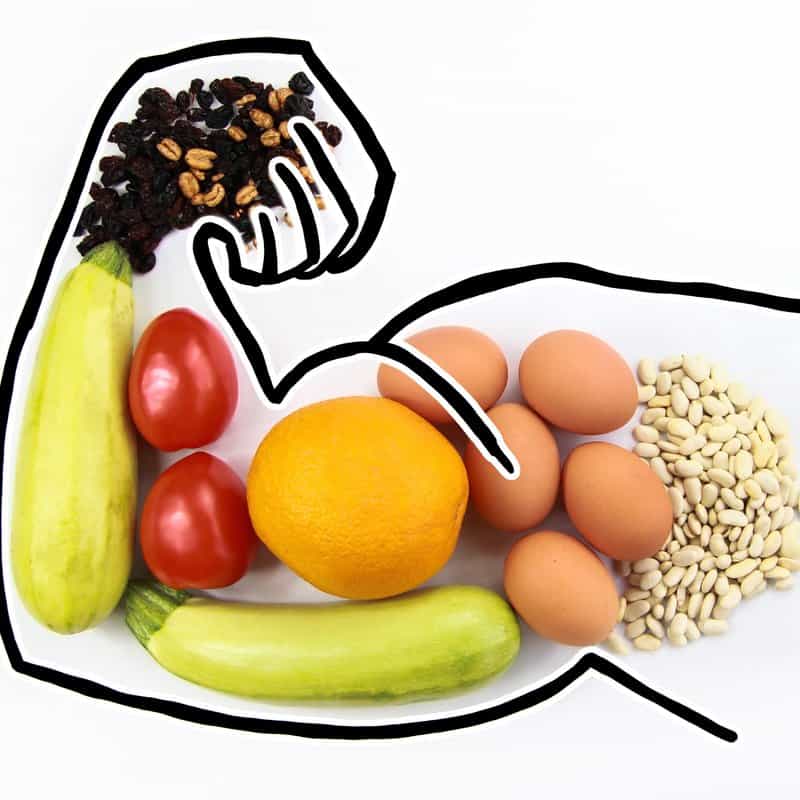This Dr. Axe content is medically reviewed or fact checked to ensure factually accurate information.
With strict editorial sourcing guidelines, we only link to academic research institutions, reputable media sites and, when research is available, medically peer-reviewed studies. Note that the numbers in parentheses (1, 2, etc.) are clickable links to these studies.
The information in our articles is NOT intended to replace a one-on-one relationship with a qualified health care professional and is not intended as medical advice.
This article is based on scientific evidence, written by experts and fact checked by our trained editorial staff. Note that the numbers in parentheses (1, 2, etc.) are clickable links to medically peer-reviewed studies.
Our team includes licensed nutritionists and dietitians, certified health education specialists, as well as certified strength and conditioning specialists, personal trainers and corrective exercise specialists. Our team aims to be not only thorough with its research, but also objective and unbiased.
The information in our articles is NOT intended to replace a one-on-one relationship with a qualified health care professional and is not intended as medical advice.
Different Headache Types, Causes and 15 Natural Remedies
March 24, 2023

Life can get pretty busy and stressful, and the “common” headache is sometimes overlooked or masked with a painkiller like aspirin (which, especially when overused, can sometimes cause more serious health issues). A headache is a good indicator that your body is missing something – maybe you need to take a breather, drink some water or change the way you eat. You may have a vitamin or nutrient deficiency or a food sensitivity that is causing this built-up tension.
Headaches can be triggered by stress, fatigue, allergies, eyestrain, poor posture, alcohol or drugs, low blood sugar, hormones, constipation and nutritional deficiencies. Your body is telling you that something needs to change, so begin to heed those signals. You may be wondering, how do you make a headache go away?
To find headache relief, use these 10 headache remedies, which include herbs, vitamins, posture correction, diet changes and more, to fight headaches in a natural and healthy way.
Types of Headaches
Although there are 150 different types of headaches, there are four types that are most common. The most common types are:
Tension
This is the most common type of headache among adults and teenagers. Tension headaches are also known as stress headaches, chronic daily headaches or chronic non-progressive headaches. Causing mild to moderate chronic pain, they come and go over time.
Cluster
These headaches are the most severe, but least common type. The pain is intense and can feel like a burning or piercing pain behind the eyes. Cluster headaches occur in groups over a period of time lasting from a couple of weeks to a couple of months. They may go away for months or years, but then come back.
Sinus
Inflamed sinuses can cause pain in your cheeks, forehead and bridge of your nose. Usually other sinus symptoms, such as a runny nose, fever, pressure in the ears and facial swelling, occur at the same time.
Migraine
Migraine headaches can last from a few hours to a few days and usually occur one or more times a month. People usually have other symptoms with migraines, including: sensitivity to light, noise or smells; nausea or vomiting; loss of appetite; and upset stomach or belly pain. A child experiencing a migraine headache may turn pale, feel dizzy, have blurry vision, a fever and an upset stomach.
Mixed Headache Syndrome
This type of headache is also known as a transformed headache and includes symptoms of both migraine and tension headaches. Adults and children may both experience mixed headaches.
Causes and Risk Factors
You may be wondering what causes headaches. In general, headaches occur due to a combination of nerve signals sent from the blood vessels and muscles in the head. What causes these signals to turn on is still unknown. Headache triggers can include:
- Illnesses such as sinus infections, colds, fever or throat infection.
- Stress
- Eyestrain or back strain
- Environmental causes such as secondhand tobacco smoke, smells from chemicals or perfumes
- Heredity as headaches tend to run in families, especially migraines
- Food allergies
- Hormone imbalance
- Vitamin or mineral imbalance
- Aspartame
Remedies
What can you do for a headache? Luckily there are several natural remedies that can show you how to make a headache go away fast without medicine. Try some of these natural ways to fight headaches.
1. Magnesium
Magnesium is one of the most successful headache remedies, first of all, because it’s much safer than taking a painkiller. People who suffer from serious headaches, like migraines, often have low levels of magnesium, and several studies suggest that magnesium may reduce the frequency of migraine attacks in people with low levels.
Those prone to low counts of magnesium include people with diabetes, heart disease, alcoholism as well as those on diuretics for blood pressure.
Magnesium may prevent the wave of brain signaling, called cortical spreading depression, which produces the visual and sensory changes that are common when experiencing a headache, especially a migraine. Magnesium can block the pain-transmitting chemicals in the brain, and it can improve platelet function, which will help your body react to injuries and prevent bleeding.
Taking 200–600 mg of magnesium a day can reduce the frequency of headache attacks. Both oral and intravenous magnesium are widely available, extremely safe and inexpensive. Magnesium can be used safely by women who are pregnant. The most frequent side effect of magnesium is diarrhea, but lowering your dose or taking it less often can eliminate that issue.
To increase your daily magnesium intake, eat more fiber. Dietary sources of magnesium include beans, whole grains, seeds, nuts and vegetables like broccoli, squash and leafy greens. Dairy products, meats, chocolate and coffee also include decent levels of magnesium.
2. Gluten-Free Diet
When people with gluten sensitivity eat foods containing gluten, it can lead to a headache. According to the National Foundation for Celiac Awareness, patients who have undiagnosed celiac disease and migraine headaches often see either complete resolution of migraine headaches, or a significant reduction in the frequency and strength of symptoms after giving up gluten.
You may not have celiac disease, but a gluten sensitivity that gives you a headache. If this is the case, you don’t have to cut out gluten completely — instead, try to cut back on your daily intake.
Start this headache remedy by going on a gluten-free diet for three weeks, then introduce foods containing gluten slowly. Pay attention to the way you feel when adding more gluten to your diet and find your happy balance. Listen to your body you will find out how much of a food group you can eat without triggering symptoms.
3. Peppermint and Lavender Essential Oil
The calming and numbing effects of both peppermint and lavender oils make them perfect tools for finding headache relief.
Peppermint oil generates a long-lasting cooling effect on the skin. Research shows that peppermint oil stimulates a significant increase in skin blood flow of the forehead, and it soothes muscle contractions. One study showed that peppermint oil, in combination with ethanol, reduced headache sensitivity.
Lavender oil is commonly used as a mood stabilizer and sedative. Research has shown that the use of lavender oil is a safe and effective treatment of migraine headaches. One study conducted in 2012 measured the results of inhaling lavender oil for 15 minutes. The 47 participants were asked to record the effects every half hour, for two hours. Out of 129 headache attacks, 92 responded to the lavender oil remedy.
Yes, essential oils for headaches make very effective remedies, so take advantage of their benefits by placing a few drops of peppermint or lavender oil into your hands and then rubbing the blend on your forehead, temples and back of neck. If the smell is too strong for you, or if the peppermint is too chilling, dilute it down by mixing the essential oils with almond, grapeseed or coconut oil. By adding coconut oil, you can take advantage of its own amazing health benefits — like balancing hormones, moisturizing skin and decreasing wrinkles.
4. Chiropractic Care and Posture
One of the best things about chiropractic care is that it’s a drug-free and surgery-free path to healing naturally. The chiropractor can reduce oxidative stress in the body. Several clinical trials indicate that spinal manipulation therapy may help treat headaches.
Chiropractic adjustments or spinal manipulation helps to alleviate the stress of your system. Studies suggest that chiropractic manipulation reduces tension and migraine headaches. The Canadian Memorial Chiropractic College conducted a study involving 729 subjects, of whom 613 received chiropractic care and their outcomes ranged from good to excellent, indicating that it’s a positive and beneficial headache remedy.
5. Herbs Feverfew and Butterbur
Headaches can be relieved naturally through the use of tension-easing herbs.
The leaves of feverfew are used to make medicine. Research shows that consuming feverfew reduces the frequency of migraine headaches and headache symptoms, including pain, nausea, vomiting and sensitivity to light and noise.
A systematic review, completed by The School of Postgraduate Medicine and Health Science, U.K, compared the results of six studies. The results indicate that feverfew is effective in the prevention of migraine headaches and doesn’t pose any major safely concerns.
If you’re interested in trying this natural remedy, it’s easy to find and purchase feverfew products, which are typically made of dry feverfew leaves. Feverfew supplements are available fresh, freeze-dried or dried. Feverfew can be purchased as capsules, tablets or liquid extracts; the recommended dose for headache relief is 50–100 milligrams of feverfew extract.
Butterbur is an herb that reduces the inflammatory effect of chemicals that trigger headaches, especially migraines. It also acts as a beta blocker, resulting in normal blood flow to the brain. Doses of at least 75 milligrams twice daily seem to be necessary for the best headache-reducing results.
One study, done over a four-month period, showed that migraine attack frequency was reduced by 48 percent in participants who consumed 75 milligrams of butterbur twice a day. This research, done at Albert Einstein College of Medicine, measured a decrease in migraine attack frequency — suggesting that butterbur is an effective headache remedy and symptom reliever.
6. B-Complex Vitamins
Many B vitamins are involved in the formation of neurotransmitters, such as serotonin, which may be deficient in people who suffer from migraines. Sadly, millions of Americans are coming up short on one or more of the B vitamins and this is causing energy slumps, unhealthy blood cell and adrenal effects, foggy thinking and headache symptoms.
A B-complex vitamin includes a group of eight water-soluble vitamins: thiamine, riboflavin, niacin, vitamin B6, folate, vitamin B12, biotin and pantothenic acid. Together, these vitamins improve brain cells, circulation, immune function and cardiovascular health.
B vitamins are water-soluble, so an overdose is rare. If there is extra in your system, it will be flushed out through urine. A 2021 indicated that vitamin B2 may reduce the frequency, intensity and duration of migraines. In particular, 400 milligrams of vitamin B2 was given each day for three months in a row; it had a “significant effect on days, duration, frequency and pain score of migraine attacks.”
7. Stay Hydrated
The dehydrating effects of coffee, sugary drinks and alcohol can certainly leave us with a killer headache. Most Americans simply aren’t getting enough water, which in itself can relive headache pain and symptoms. This simple (and free) remedy will keep you feeling full, energized and headache-free.
You can also quench your thirst and stay hydrated with fruits and veggies — some even have a water content that’s over 90 percent. Try adding these nutritious fruits and veggies to your diet in order to stay hydrated throughout the day:
- Cucumbers
- Celery
- Radishes
- Green peppers
- Cabbage
- Zucchini
- Cauliflower
- Eggplant
- Spinach
- Watermelon
- Strawberries
- Grapefruit
- Cantaloupe
- Oranges
A study done at the National Hospital for Neurology and Neurosurgery concluded that there is indeed a water-deprivation headache. The study noted that while water deprivation is common and recognized by the public, it was not described in medical literature. The research indicated that headaches from a lack of water include impaired concentration and irritability, too.
8. Detox Bath to Reduce Tension
A detox isn’t just for cleaning your body, but also for ridding your body of toxins that will make you sick and can be one of the best preventative headache remedies. To bring toxins to the surface of your skin, make the water as hot as you can tolerate; then, as you sit in the cooling water, the your body will release the toxins.
You can dress up your detox bath to boost its tension-reducing capabilities:
- Add a cup of baking soda to hot bath water. Baking soda kills bacteria, leaves your skin clean and smooth, and minimizes skin irritability — making it a handy and inexpensive product.
- Add essential oil to your bath water. The soothing, calming, invigorating and cooling qualities of these oils will release any pent-up tension that your body is holding on to, offering pain relief. Try lavender, peppermint, lemongrass, frankincense or sandalwood oil.
- Add two cups of apple cider vinegar to hot bath water. The ACV draws excess uric acid out of the body, and it provides joint pain, arthritis, gout and headache relief. ACV can also soothe sunburn, heal poison ivy, kill fungus and tone your skin — so there are some extra health benefits to this easy headache remedy.
9. Stretching and Moving
Staying in one position for an extended period of time, like sitting at your desk or computer, can lead to body tension and create headache symptoms.
Plus, let’s face it, many of us spend hours a day hunched over, such as peering at your smartphone. This position, with your head sticking out, puts an extra 20–30 pounds of pressure on your neck!
No wonder such a position leads to major tension headaches. An easy way to avoid this chain reaction is to take a break every 30-60 minutes — stretch and move your head and neck around in a circular motion. This will relieve the built up stress and can help in avoiding headaches.
Doing yoga is a great way to relieve built-up tension. Yoga clears your mind and loosens your muscles — it improves respiration, vitality and muscle strength, and it’s great for the circulatory system. If you feel a headache coming on, try a few yoga poses like the downward facing dog or child’s pose.
A 2012 study done by the Department of Physical Medicine and Rehabilitation in Finland measured the results of a stretching program for 60 women. The 12-month program resulted in a 69 percent decrease in headache frequency and symptom intensity. In addition to stretching, the results were even better when participants added muscle endurance and strength training exercises to their routines.
10. Reflexology
Perhaps massaging your toes could help eliminate your headache. Reflexology is an ancient Traditional Chinese Medicine (TCM) healing art in which certain points or zones of the feet are stimulated to encourage healing in corresponding parts of the body. Researchers still aren’t entirely sure just how reflexology works, yet it is indeed effective at treating a variety of conditions, including headaches.
You can try stimulating some headache-relieving reflexology points at home. There are four headache remedy pressure points on your feet and one on the hand that when stimulated can help give you some headache and migraine relief. First massage the area between your big toe and the second toe. If your headache is in your right temple, massage this point on your left foot and vice versa. To relieve a headache, you can also press the Tai Chong or Liver 3 point on the top of your foot. Again massage this point on the foot opposite to the side of your head where you feel pain. Or, massage both feet if you have pain on both sides of your head.
There is helpful another point near the outer edge of the top of the foot, located where the bones of the pinky toe and the second to last toe intersect. Press and hold this point for 30 to 60 seconds to relieve headaches that run through the side of the head to the forehead. Finally, you can also stimulate the tops of the big toes, under the toenail to the base of the toe, to relieve headache pain located in the face, such as in the sinuses. Do not stimulate these points if you are pregnant.
11. Acupuncture
Another holistic TCM remedy, acupuncture originated in China about 2,500 years ago and is used to treat a wide variety of diseases, including headaches and migraines. Acupuncture seeks to balance the body’s energy, or Qi, by stimulating specific points on the body.
One 2020 study looked at 15 systematic reviews and concluded that acupuncture was both a safe and effective therapy for migraine.
Similarly, dry needling is often used by healthcare providers to relieve symptoms in patients with certain types of headaches, including tension headaches, cervicogenic headache (which begins in the neck typically) and migraines. A 2021 meta-analysis examined how dry needling affected headache pain intensity and related disability. For patients with tension-type headaches, dry needling “provided significantly greater improvement in related disability in the short term.”
12. Rest
Particularly if you are struggling with migraines, resting or sitting in a darkened room can help relieve symptoms and it can be a basic headache treatment at home. Close your eyes and focus on relieving tension in your neck, back and shoulders.
13. Compress
When reaching for a compress, most people begin to wonder whether they should be using a hot or a cold compress. The answer: either could work for a headache. Many people with tension headaches prefer using a warm compress, while people with migraines often prefer cold. Whether migraine fighting or fending off a tension headache, either, however, could offer pain relief, so if you try one with no success, you can try the other.
Final Thoughts
- There are four common types of headaches: tension, cluster, sinus and migraine.
- Headaches may have a variety of causes, including illnesses, food or chemical allergies, back or neck strain, aspartame, heredity and hormone imbalance, among others.
- There are at least 13 natural remedies you can try to relieve headache symptoms, including magnesium supplementation, essential oils, reflexology, headache- and migraine-fighting foods, acupuncture, rest and a cayenne muscle rub.







